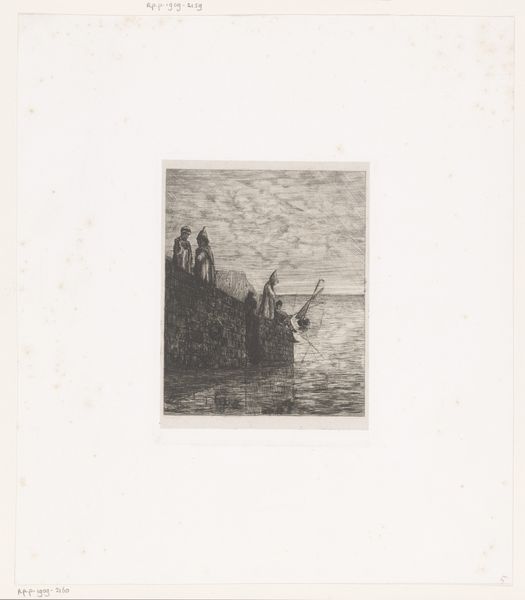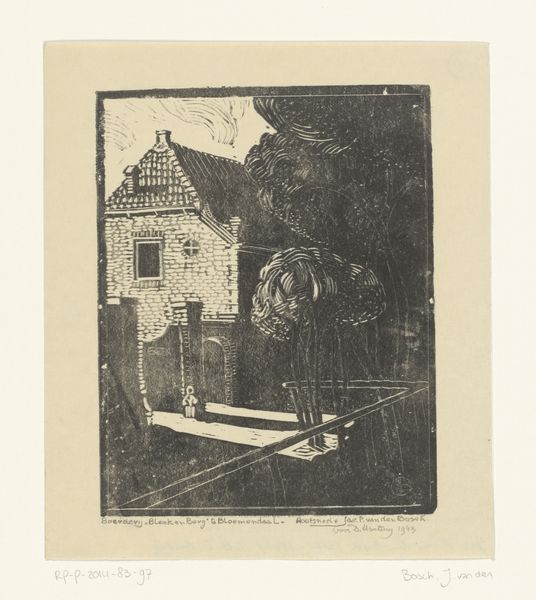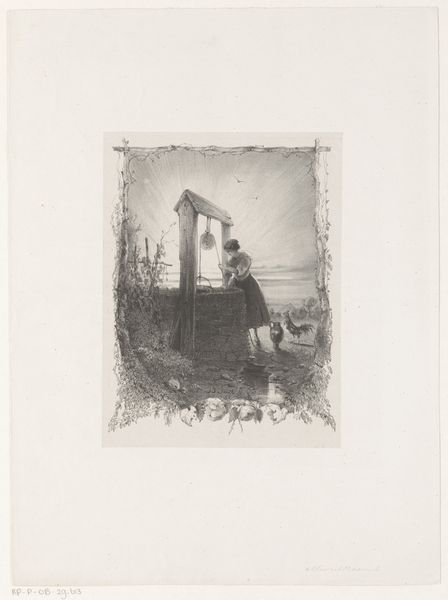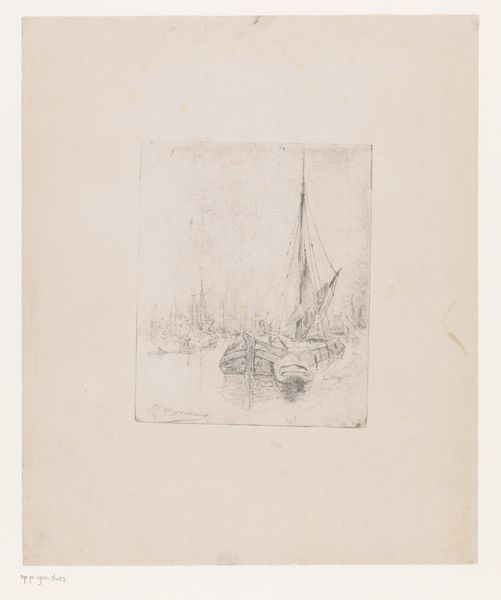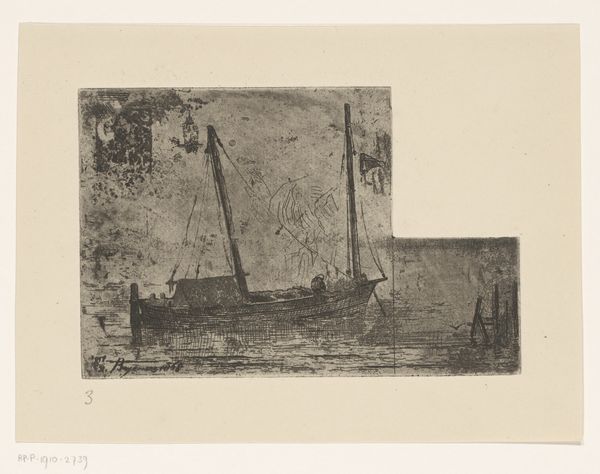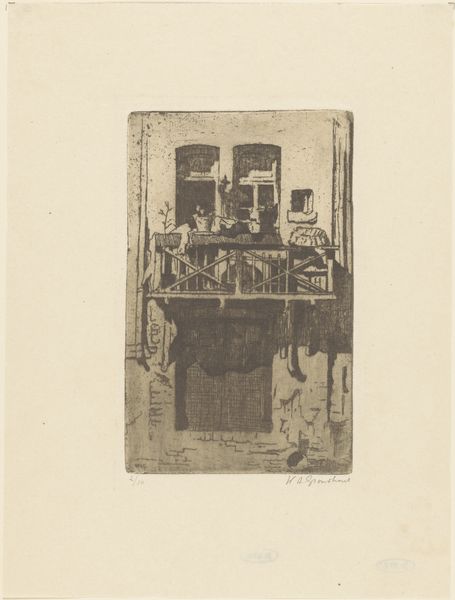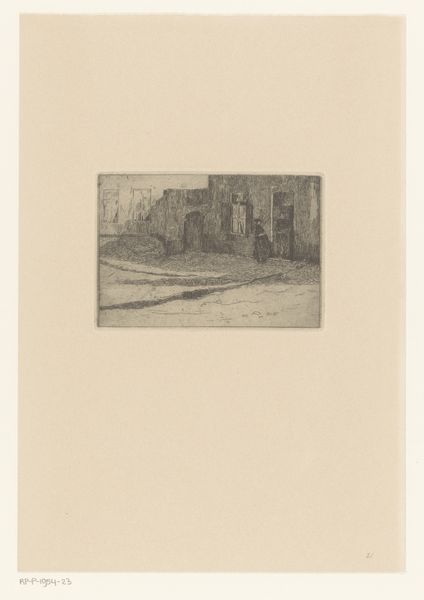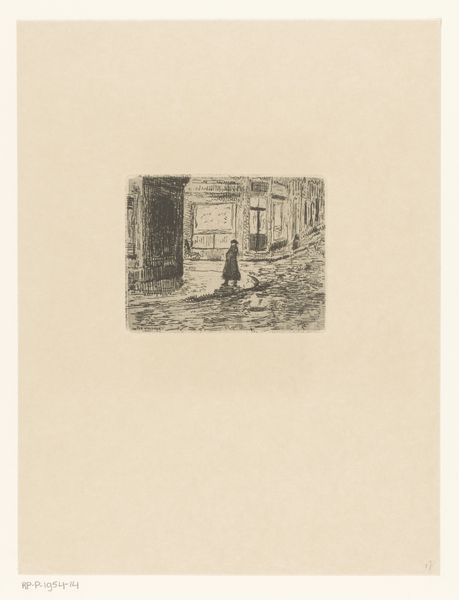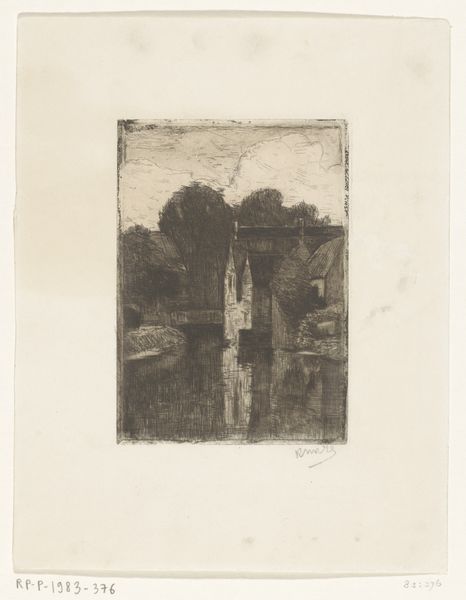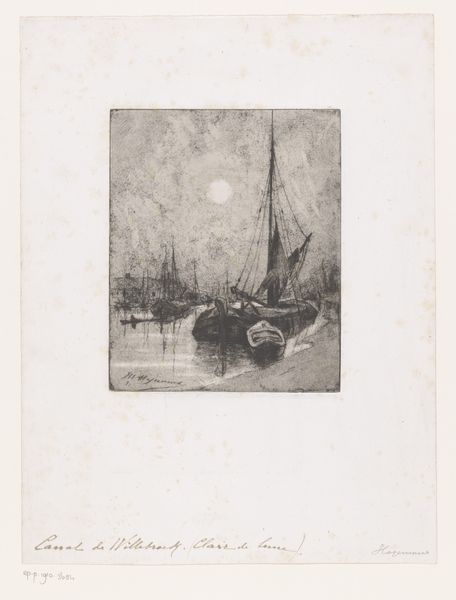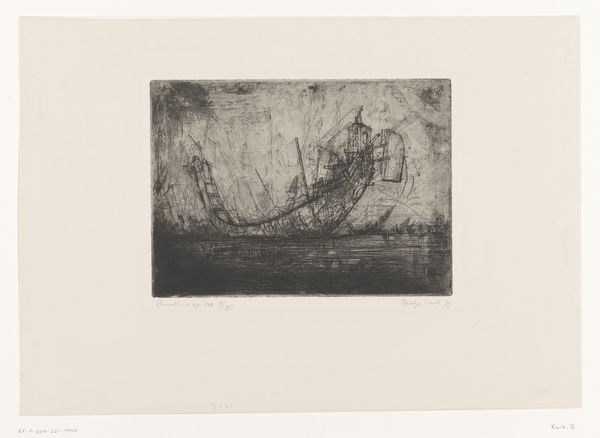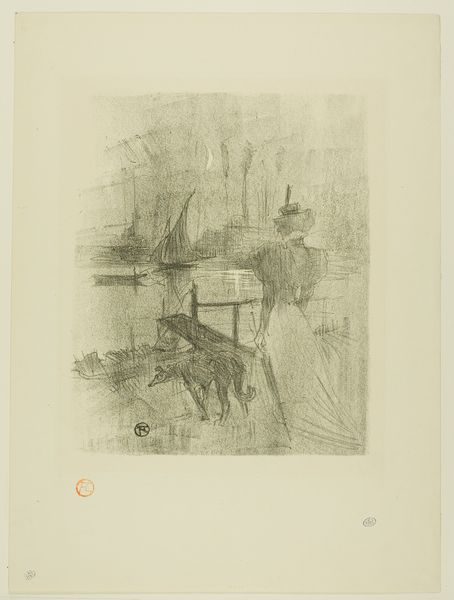
print, etching
#
dutch-golden-age
# print
#
etching
#
landscape
#
cityscape
#
realism
#
monochrome
Dimensions: height 198 mm, width 140 mm
Copyright: Rijks Museum: Open Domain
Curator: What a powerfully atmospheric scene! The monochrome palette almost obscures the structures themselves. Editor: It's got such a gritty quality; you can practically feel the dampness in the air. What exactly are we looking at? Curator: This etching, crafted by Willem Witsen in 1887, is entitled "Ophaalbrug en schip in de mist," which translates to "Drawbridge and ship in the mist". It’s part of the Rijksmuseum’s collection, and it offers us a glimpse into the industrialized Dutch landscape of the late 19th century. Editor: I’m immediately drawn to the materiality. It's a print, yes, but there’s something almost sculptural about the way Witsen has rendered these architectural elements. The heavy bridge structure, those worn wooden planks... It really foregrounds labor. Curator: Exactly! Consider how Witsen situates these symbols of industry – the bridge and ship – not as monuments of progress, but within a hazy, almost oppressive environment. This invites a discussion about the human cost of industrial advancement and the societal changes occurring at the time. The bridge, especially, becomes a metaphor for transitions, passages across divides both physical and societal. Editor: I see that tension. And think about what materials make up a ship – the extracted metal ores smelted, the trees felled and milled – it forces us to confront our consumptive relation to resources and to labor itself. This contrasts with our perspective today where production lines may be invisible, externalized and abstracted as logistical or managerial tasks. Curator: The realism here invites a reflection on who gets to narrate history. Witsen's work can be read as a subtle commentary on power structures within a rapidly changing society. How are these landscapes impacted by the elite at the top and what happens to workers at the bottom of the rungs? Editor: And thinking materially again, etching lends itself well to that subtly. Its reproductive capacity means these messages circulate—to workers and the elite alike—which in itself contributes to a wider shift in society's understanding of what counts as labor or visibility. Curator: Absolutely. Reflecting on this image really offers layers of dialogue: technological shifts, social changes, environmental impact... Editor: Agreed. By thinking about the production of an artwork as well as that which the artwork presents us, new and old, historical or contemporary understandings shift.
Comments
No comments
Be the first to comment and join the conversation on the ultimate creative platform.
